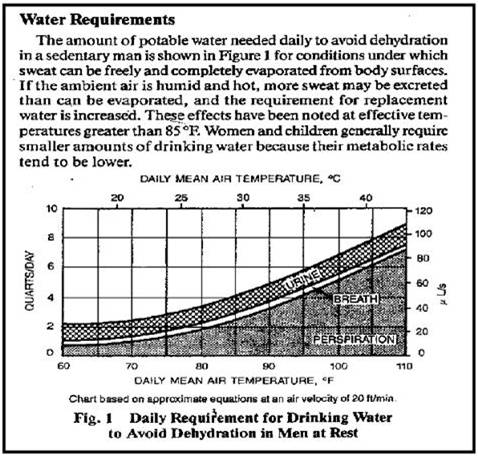
*Carbon Dioxide Buildup in Shelters*
By: Jeff_in_NoVa
31 January 2016
There has been some interests and concerns about closed/sealed environments in shelters. I wanted to share a couple of things we use at work concerning occupancy of sealed shelters. I have a copy of Chapter 11 from a 1991 ASHRAE Fundamentals Handbook called ENVIRONMENTAL CONTROL FOR SURVIVAL. This chapter has since been deleted and it's only by luck that I was able to find it in hard copy.
Carbon Dioxide (CO2) is a real killer in sealed environments that are occupied by people. It will become a problem much sooner than oxygen depletion.
A quick rule of thumb for using this equation is that for every 500 ft3 of shelter free/open space, ONE person can stay sealed in for 20 hours before CO2 reaches a dangerous level.
This works out to about an 8' wide x 8' high x 8' long free/open shelter area, PER PERSON, will be habitable for about 20 hours without fresh ventilation. This will tell you how long a single person could occupy that shelter before ventilation would have to be initiated in order to bring in fresh air or the shelter would need to be evacuated. Remember to subtract the volume occupied by your stored items from the open space when doing these calculations... you can't breathe a box of toilet paper ☺. Please think about that when designing your shelter.
As far as wondering how much ventilation is required for the sealed shelter, a ventilation rate of 3 cubic feet per minute (cfm) PER PERSON would be enough to maintain CO2 levels at approximately 0.5% indefinitely. This may not be enough to manage the temperature and humidity levels in the shelter but you won't die from CO2 exposure.
Water consumption is a major concern in a survival situation, especially when occupying a sealed shelter. I think we've all heard of the DHS/FEMA recommendation to store 1 gallon of fresh water per person, per day, for the duration of the expected emergency. Half of that is budgeted towards hygiene and cleanliness which leaves 2 quarts per day for consumption. I've read posts on here stating a firm belief that 1 gallon per day is not enough and I'd agree with them and I found this chart giving some recommendations for water intake. It's the only one I've seen that actually tries to equate shelter conditions with required hydration rates. The study that produced this chart was conducted in the late 1960's so there may be better information available but I haven't found it yet.

To explain the chart, there is an assumption that there will be air flow in the sealed chamber to aid in perspiration (20 ft/min air velocity) and this figure applies to men AT REST so that rate could go up dramatically if work is involved. Women and children would require less but by an undetermined amount.
The daily mean temperature, in degrees F across the bottom, is the environmental air temperature that you are in. The quarts/day of recommended hydration is on the left vertical axis. The metric equivalents are across the top and right axis if you prefer those units of measure.
The human body is an evaporative-cooled mechanism. We sweat to reduce internal heat loads, we breathe out water vapor during respiration and we, if properly hydrated, will urinate to maintain proper body functions. The processes of Perspiration, Breath and Urination (PBU) are additive in their effect on water content in the body.
As you can see from the chart, the 2 quarts/day consumption would barely cover PBU at a mean air temperature of 60o F. Sealed shelter environments (temperature and humidity) will rise during the duration of the stay due to heat buildup from the people in the shelter as well as from any other heat producing events. If adequate ventilation is not brought in to get rid of some of the heat and humidity then the elevated temperatures will, in turn, drive up hydration requirements even more. If your shelter is 85o F, the hydration requirement has almost doubled to over 4 quarts per day. Plan accordingly.
The daily mean temperature in a shelter is not easily determined in a straight-forward manner. That will be a topic for another day. My advice for now would be to monitor the temperature of your sealed shelter, once occupied, to determine what levels it will get to and then refer to the chart for selecting the appropriate amount of water to consume.
Jeff_in_NoVa
www.alpharubicon.com
All materials at this site not otherwise credited are Copyright © 1996 - 2016 Trip Williams. All rights reserved. May be reproduced for personal use only. Use of any material contained herein is subject to stated terms or written permission.